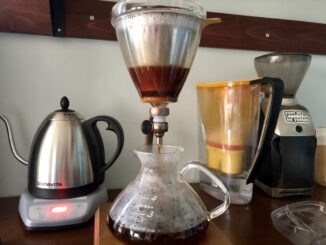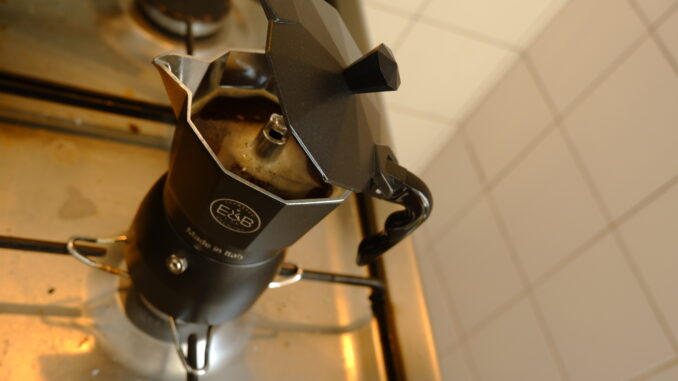
Several improvements have been made to the traditional Moka pot design to make E&B’s own edition optimized for sweetness and acidity.
BY TANYA NANETTI
SPECIAL TO BARISTA MAGAZINE ONLINE
Photos courtesy of Tanya Nanetti
Growing up in the 1980s in Italy means that you were likely raised with the idea that there’s only one way of brewing coffee at home: the Moka pot. Because for decades, well before the spread of home espresso machines and pourover sets, the Moka pot was, at least in Italy, synonymous with homemade coffee.
And traditionally, this coffee has always been burnt, bitter, and over-extracted, prepared mostly without any knowledge of dialing in, often brewed in the morning and enjoyed cold and stale all day long.
So imagine my surprise when, in recent years, I started to read about the chance of brewing a good cup of specialty coffee with the Moka pot. Bloggers, coffee shops, coffee magazines … suddenly everyone was talking about the Moka pot, and I became eager to try it.
That’s why I was so happy when I finally got the chance to try the Moka pot produced by E&B. In matte black, eye-catching, and trendy looks, it’s certainly a design-forward object. But what about the end result?
Would the final brewed cup be worth the transition from a “basic” Moka pot to something more professional—and higher end—than the original?
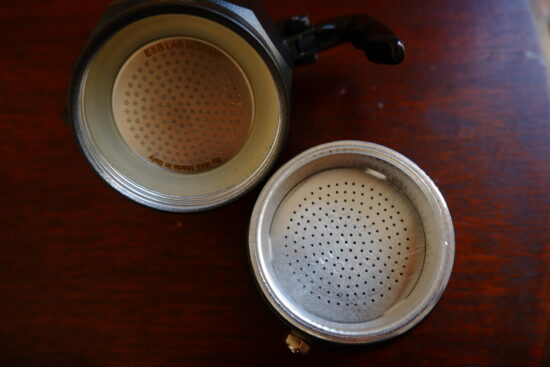
The Creative Lab at E&B
Born in Pavia, Italy, in the historical factory IMS that has been producing filters for coffee machines since the middle of the last century, the E&B brand defines itself as “the Creative Laboratory of IMS,“ where new products are designed and manufactured with an artisanal approach.
And here, with the E&B Moka pot, all creative efforts have produced not only this Moka pot but also competition-grade filters, purposely created with smaller holes (0.2mm in diameter compared to the 0.8mm of traditional filters) to enhance the coffee extraction process.
Having such an improved filter means that the traditional recipe needs an upgrade, and after some research and consultation with Italian Brewers Cup champion Alessandro Galtieri, I finally started my brew.
The First Moka Pot Brew
Contrary to what typically happens, the first alternative trick is to fill the lower part of the Moka just until under the valve with already-warm water. This way, the coffee brew will start quicker, preventing the coffee from burning or over-extracting.
At this point, it’s time to put the ground coffee in the coffee funnel. For a three-cup Moka, I used 17 grams of high-quality, medium-ground coffee (I used a Volcán Azul from Costa Rica—around 16 clicks on the Comandante grinder seemed like the perfect size), gently placed into the funnel without pressing.
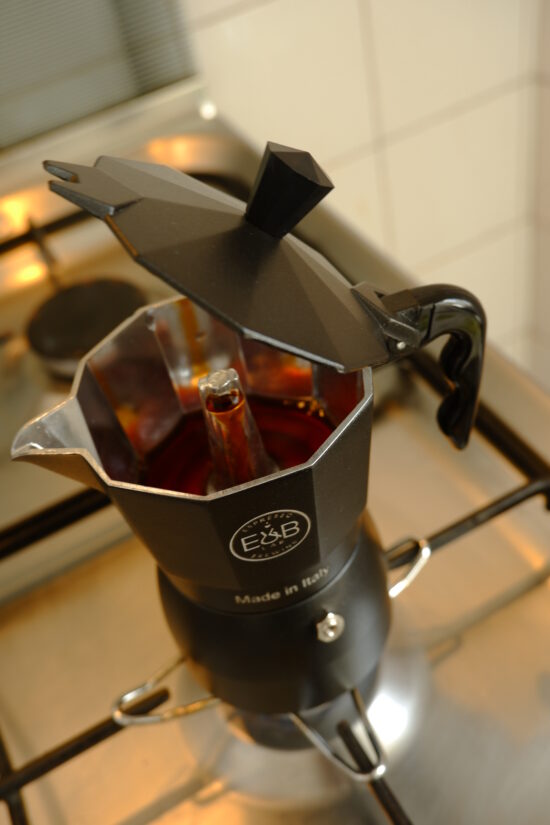
After screwing in the upper part, it’s time to put the Moka on the stove. Another tip is to leave the lid open to check the status of the extraction. In fact, it’s precisely at this point that things deviate most from the “original” recipe, in which traditionally the coffee pot is left on the stove until the final gurgle that signals that all the coffee has been brewed. Here, the secret is to turn off the stove when the coffee has just started filling the upper chamber.
This way, at around two and a half minutes, the extraction will already be finished and the coffee will not burn. The end result is a cup more similar to a filter coffee than a traditional coffee brewed with the Moka—a sweet coffee that shines with bright acidity.
What’s Different About This Device?
The reason the E&B Moka brews this profile is simply due to the physics of the filter. The smaller holes of the filter help avoid the passage of high-pressured water in the coffee puck, and in this way the brewed coffee is more elegant, with fewer fine particles and less bitterness, but at the same time with more clarity and more pleasant acidity.
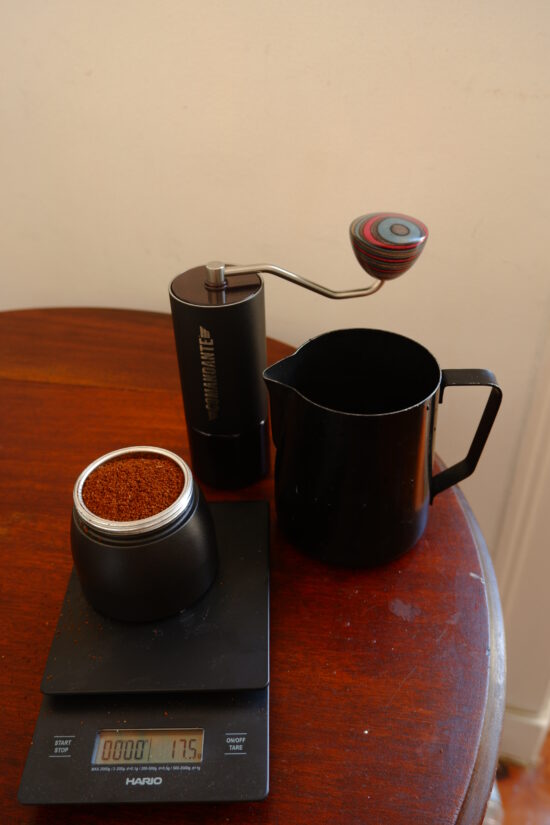
Pros and Cons
At $50 USD, the price is a little higher than the average $20 pot, but at the same time it offers a much better result than the conventional brands.
The only real drawback is that by stopping the brew before it’s completely finished, the final amount of coffee will be less than in the traditional recipe. This is why it makes more sense to consider a three-cup model as the ideal size to be enjoyed by two people, and a six-cup size for four to five people.
Otherwise it’s incredibly quick, easy to use, and perfect for both a solo brew and to share with friends.
In short, the E&B Moka is a cool modernized brewing tool to have at home. With a few small adjustments to the traditional recipe that many of us have known for generations, it can produce a really good cup of coffee in less than three minutes.
ABOUT THE AUTHOR
Tanya Nanetti (she/her) is a specialty-coffee barista, a traveler, and a dreamer. When she’s not behind the coffee machine (or visiting some hidden corner of the world), she’s busy writing for Coffee Insurrection, a website about specialty coffee that she’s creating along with her boyfriend.



